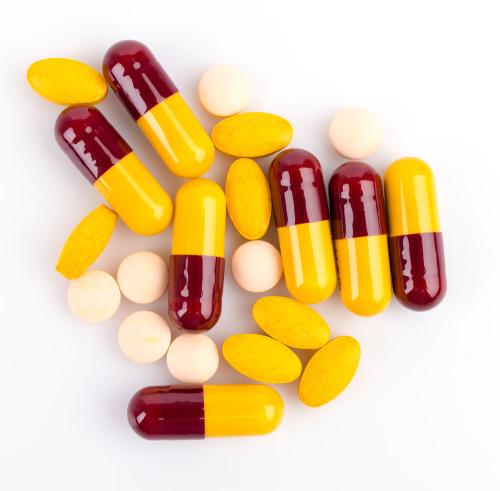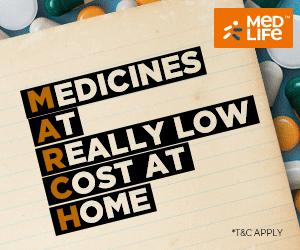When it comes to generic drugs, what kind of drugs do you think of?
Generic drugs are drugs that have the same active ingredients, the same dosage, the same route of administration, the same dosage form, and the same indications as the original drug (also called a patented drug or brand-name drug). However, they have important economic and social benefits such as reducing medical expenditures, increasing the availability of medicines, and improving the level of medical services. In other words, generic drugs have the same therapeutic effects and the same safety guarantees as the original drugs, but the price is much lower.The United States is the country with the most developed pharmaceutical industry in the world, and it is also the country with the strongest ability to create pharmaceutical products and the most popular patent protection in the world. However, 40% to 50% of prescription drugs used by Americans are generic drugs, and generic drugs are increasing at a rate of 15% every year.
My country’s neighbor, India, is a large developing country like my country, but the status of generic drugs in the global drug market is increasing. According to Indian customs statistics, most of the drugs exported by India each year are generic drugs.
But are all generic drugs really safe and reliable? Are generic drugs really the same as original drugs? What is the real state of this industry? Is it flooded with dishonest counterfeiters, or is there no shortage of discounters who ensure quality?
The author of "The Truth about Generic Drugs", Catherine Eban, conducted a decade-long investigation of the global industrial chain of generic drugs, revealing the hidden safety hazards behind it and the terrible risks it brings to global public health.
Through interviews with whistle blowers, investigators, and medical staff, Catherine Eban combed through the massive amounts of information contained in thousands of pages of confidential documents from the U.S. Food and Drug Administration. Eban exposed an industry with rampant fraud and data falsification. In order to reduce costs and maximize profits, business managers do not hesitate to evade almost every principle of safe production. And patients who take these drugs without knowing it will have unpredictable consequences and sometimes even life-threatening.
In 2015, the National Food and Drug Administration launched a nationwide evaluation project-generic drug consistency evaluation.
The consistency evaluation of generic drugs refers to the quality consistency evaluation of the generic drugs that have been approved for marketing according to the principle of consistency with the quality and efficacy of the original drug. This means that the quality and efficacy of the generic drug must be comparable to that of the original drug. Consistent level. This evaluation policy is a rigid requirement for the quality of generic drugs.
Carrying out the consistency evaluation of generic drugs can make generic drugs consistent with the original drugs in terms of quality and efficacy, and can replace the original drugs clinically. This not only saves medical costs, but also improves the quality of my country's generic drugs and the overall pharmaceutical industry. The level of development ensures that the patient’s medication is safe and effective.
The generic drug industry is the ultimate touchstone of globalization.
Catherine Eban's "The Truth about Generic Drugs", with its thrilling documentary literature, will lead readers to witness how a pioneering work in the field of public health has gradually developed into a terrifying scam. At the same time, it can also trigger our thinking: while bringing health to patients through the low-cost treatment plan of generic drugs, we should be more alert to the hidden safety hazards behind it.
My country’s neighbor, India, is a large developing country like my country, but the status of generic drugs in the global drug market is increasing. According to Indian customs statistics, most of the drugs exported by India each year are generic drugs.
But are all generic drugs really safe and reliable? Are generic drugs really the same as original drugs? What is the real state of this industry? Is it flooded with dishonest counterfeiters, or is there no shortage of discounters who ensure quality?
The author of "The Truth about Generic Drugs", Catherine Eban, conducted a decade-long investigation of the global industrial chain of generic drugs, revealing the hidden safety hazards behind it and the terrible risks it brings to global public health.
Through interviews with whistle blowers, investigators, and medical staff, Catherine Eban combed through the massive amounts of information contained in thousands of pages of confidential documents from the U.S. Food and Drug Administration. Eban exposed an industry with rampant fraud and data falsification. In order to reduce costs and maximize profits, business managers do not hesitate to evade almost every principle of safe production. And patients who take these drugs without knowing it will have unpredictable consequences and sometimes even life-threatening.
Why are generic drugs cheap?
In terms of ingredients, generic drugs are almost the same as brand-name drugs, and they are genuine and genuine drugs. Similar to other knockoff products, the biggest advantage of generic drugs over patented drugs is price.
Everyone knows the function of the famous "Viagra" (Viagra), and the price is 128 yuan per tablet. Its generic name is "sildenafil", and its patent expired in May 2014, followed by Baiyunshan Pharmaceutical General Factory in the same year with the approval of a generic drug for "domestic Viagra". In September 2014, Baiyun Mountain’s "Chinese Viagra" Jin Ge was officially unveiled. The price is RMB 48 for one pack, RMB 89 for two packs, RMB 133 for three packs, RMB 178 for four packs, and RMB 345 for 10 packs. In other words, the medicine price of 128 yuan will directly come to 34.5 yuan. The other one approved in the same period was the "Malfele" developed by Jiangsu Yabang Epson Pharmaceutical. The retail price of 10 tablets is also 400 yuan, which is 40 tablets, which is one-third of Pfizer's "Viagra". One. Since then, the 120 million ED patients in China no longer worry about the high price of the “blue pill”.
Everyone knows the function of the famous "Viagra" (Viagra), and the price is 128 yuan per tablet. Its generic name is "sildenafil", and its patent expired in May 2014, followed by Baiyunshan Pharmaceutical General Factory in the same year with the approval of a generic drug for "domestic Viagra". In September 2014, Baiyun Mountain’s "Chinese Viagra" Jin Ge was officially unveiled. The price is RMB 48 for one pack, RMB 89 for two packs, RMB 133 for three packs, RMB 178 for four packs, and RMB 345 for 10 packs. In other words, the medicine price of 128 yuan will directly come to 34.5 yuan. The other one approved in the same period was the "Malfele" developed by Jiangsu Yabang Epson Pharmaceutical. The retail price of 10 tablets is also 400 yuan, which is 40 tablets, which is one-third of Pfizer's "Viagra". One. Since then, the 120 million ED patients in China no longer worry about the high price of the “blue pill”.
Why are the original research drugs expensive?
Because it is a brand-new drug, it can be understood as an invention. The process of discovering a drug requires a lot of money and a lot of money for long-term preclinical safety research and human clinical trials. Evaluate the effectiveness and safety of drugs. The research and development cost of a new drug often reaches US$2 billion, or even US$5 billion. Once a new drug is approved for marketing, the original research drug company will have to promote it, which costs a lot.
In contrast, generic drugs do not need to invest a lot of money in clinical research, and the research and development costs are much lower than the original drugs, which can save huge expenditures for patients and medical insurance. Therefore, some experts believe that the greatest benefit of generic drugs is that they greatly reduce drug prices. If there is a medicine, the inventor will sell it for US$6,000 per ton, and imitate it in India after the protection period, and sell it for only US$60 per ton, which can greatly stimulate consumption.
"In the factories I visited in the report, investigators from the Food and Drug Administration rarely visited, and the pressure to make profits was extremely strong. As a result, under the surface of compliance, there was a dark world hidden."
The manufacturer of the original research drug only determined the production method of the drug after many trials. Any change in any step during the period will have a very large impact on the final drug properties. The dosage of each tablet of the original research drug is not determined arbitrarily. It is determined through a large number of experiments and experimental studies to determine a certain dosage. This dosage has the best effect and has the least side effects. Therefore, the single-tablet dose of the original drug should be the best dose.
A pill, when passing through the patient's digestive system, needs to disintegrate and melt at an appropriate time to release the effective ingredients and be absorbed by the gastrointestinal tract. This process is very particular: if it is too fast, it may cause the active ingredient to be absorbed too quickly, the peak serum concentration is too high, causing side effects, and the efficacy is not long enough; if it is too slow, the active ingredient may be discharged before it is completely dissolved. The effect will not play out. This process relies on the excipients and manufacturing processes used by the drugs, which are the core assets of pharmaceutical companies' research and development.
Most of the generic drugs on the market come from India. The book reveals that most Indian pharmaceutical companies have the problem of data fraud in order to make the data look good. The most basic GMP production standards are not complied with. The equipment is old and sometimes drugs are mixed with impurities such as glass slag, metal and dust. And the efficacy of the medicine cannot be guaranteed.
The book also reveals the counterfeiting of the Indian pharmaceutical giant Lambeth and the management omissions of the U.S. Food and Drug Administration (FDA). The real situation of the industry can not help but feel shocking.
In contrast, generic drugs do not need to invest a lot of money in clinical research, and the research and development costs are much lower than the original drugs, which can save huge expenditures for patients and medical insurance. Therefore, some experts believe that the greatest benefit of generic drugs is that they greatly reduce drug prices. If there is a medicine, the inventor will sell it for US$6,000 per ton, and imitate it in India after the protection period, and sell it for only US$60 per ton, which can greatly stimulate consumption.
Are generic drugs really safe?
Medicine is a special commodity, but a pharmaceutical factory is a commercial company after all. In order to continue to develop, it must be profitable. In this book, Catherine Eban’s survey proves that in order to reduce costs and maximize profits, business managers will not hesitate to circumvent almost every principle of safety in production; however, if patients around the world take these without their knowledge Drugs are very likely to have unpredictable consequences, sometimes even life-threatening."In the factories I visited in the report, investigators from the Food and Drug Administration rarely visited, and the pressure to make profits was extremely strong. As a result, under the surface of compliance, there was a dark world hidden."
The manufacturer of the original research drug only determined the production method of the drug after many trials. Any change in any step during the period will have a very large impact on the final drug properties. The dosage of each tablet of the original research drug is not determined arbitrarily. It is determined through a large number of experiments and experimental studies to determine a certain dosage. This dosage has the best effect and has the least side effects. Therefore, the single-tablet dose of the original drug should be the best dose.
A pill, when passing through the patient's digestive system, needs to disintegrate and melt at an appropriate time to release the effective ingredients and be absorbed by the gastrointestinal tract. This process is very particular: if it is too fast, it may cause the active ingredient to be absorbed too quickly, the peak serum concentration is too high, causing side effects, and the efficacy is not long enough; if it is too slow, the active ingredient may be discharged before it is completely dissolved. The effect will not play out. This process relies on the excipients and manufacturing processes used by the drugs, which are the core assets of pharmaceutical companies' research and development.
Most of the generic drugs on the market come from India. The book reveals that most Indian pharmaceutical companies have the problem of data fraud in order to make the data look good. The most basic GMP production standards are not complied with. The equipment is old and sometimes drugs are mixed with impurities such as glass slag, metal and dust. And the efficacy of the medicine cannot be guaranteed.
The book also reveals the counterfeiting of the Indian pharmaceutical giant Lambeth and the management omissions of the U.S. Food and Drug Administration (FDA). The real situation of the industry can not help but feel shocking.
Current state of generic drugs in China
My country, like India, is also a big country of generic drugs. There are huge varieties and product specifications of generic drugs, but there is a big gap between the quality of most domestic generic drugs and the original drugs. Some generic drugs in China can only achieve chemical equivalence, but biological equivalence, safety equivalence, and clinical equivalence are still out of reach.
In 2015, the National Food and Drug Administration launched a nationwide evaluation project-generic drug consistency evaluation.
The consistency evaluation of generic drugs refers to the quality consistency evaluation of the generic drugs that have been approved for marketing according to the principle of consistency with the quality and efficacy of the original drug. This means that the quality and efficacy of the generic drug must be comparable to that of the original drug. Consistent level. This evaluation policy is a rigid requirement for the quality of generic drugs.
Carrying out the consistency evaluation of generic drugs can make generic drugs consistent with the original drugs in terms of quality and efficacy, and can replace the original drugs clinically. This not only saves medical costs, but also improves the quality of my country's generic drugs and the overall pharmaceutical industry. The level of development ensures that the patient’s medication is safe and effective.
The generic drug industry is the ultimate touchstone of globalization.
Catherine Eban's "The Truth about Generic Drugs", with its thrilling documentary literature, will lead readers to witness how a pioneering work in the field of public health has gradually developed into a terrifying scam. At the same time, it can also trigger our thinking: while bringing health to patients through the low-cost treatment plan of generic drugs, we should be more alert to the hidden safety hazards behind it.
Copyright statement: The graphic is irrelevant. This article is reproduced for the purpose of conveying more information. If there is an error in the source labeling or infringement of your legal rights, please contact the website with the certificate of ownership, and we will correct and delete it in time, thank you.

















No comments:
Post a Comment